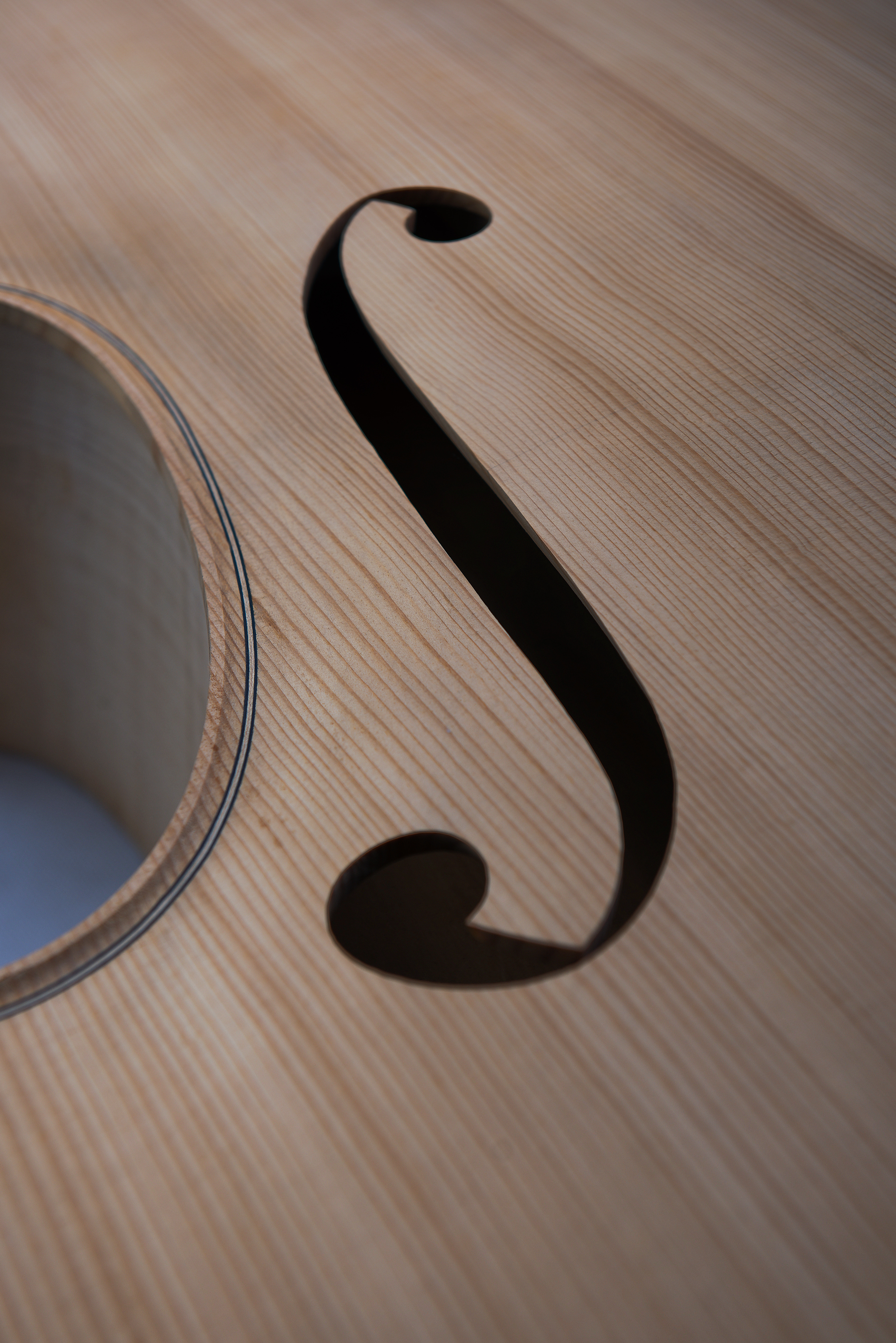The shape of the sound hole gives the instrument its ability to breath, as it allows the sound cushion of the instrument to draw or exhale air. The size of the sound hole or f holes, where they are placed in relation to the upper and lower bouts, what kind of bridge or tail piece, involve a considerable amount of science. I have seen many variations on the classic shapes and formats, but very seldom do they perform better than the conventional designs. The reason why is the bracing, the bridge the soundboard and the volume of the sound box, the design and shape, are dynamically related and for them to function correctly must follow fundamental laws of acoustics.
Sound or "f" holes that are disproportionate or positioned wrong effect the instruments voice. If the "f" holes on a double bass are too small you will hear a chuffing sound as the air tries to escape or inhale. If the "f" holes are too large the instrument can't develop a suitable sound cushion, making the instrument inefficient effecting the tone and bottom end. If the "f" holes are in the wrong position they effect the breathing of the instrument depending if they are positioned too far into the upper bout, there isn't enough volume to draw or exhale. When too deep in the lower bout the instrument has a flabby sound as the air is only working efficiently in the lower bout.
Other problems such as the relationship between the sound hole, the bracing and the bridge. If the bridge and bracing are not set up correctly the strings won't be able to generate enough energy to sufficiently effect the air cushion.
Why "f" holes on a double bass and similar instruments. As acoustician Nicholas Makris and his colleagues at MIT recently announced in a study published by the Royal Society, a violin's f-holes serve as the perfect means of delivering its powerful acoustic sound. f-holes have "twice the sonic power," The Economist reports, "of the circular holes of the fithele" (the violin's 10th century ancestor and origin of the word "fiddle"). Attempts have been made to improve the design convention of the 17-18th century, but to no avail. Info : http://www.openculture.com/
The f-holes also have a role to play in loosening the cross wise stiffness of an instruments soundboard at the waist, and that is why they are placed exactly where they are.
Being either side of the bridge of an archtop guitar they perform a similar role.
Why round holes on a flat top guitar: The efficiency of sound radiation at low frequencies in musical instruments is improved by the use of a sound hole. The sound hole enhances the radiation of sound by vibrating the volume of air inside as well as nearby its opening. A common example is an empty bottle: the air inside vibrates when you blow across the top, and enhances the radiated sound. This phenomenon, called the Helmholtz resonance, is utilized in musical instruments to enhance the radiation of sound at low frequencies. http://taflab.berkeley.edu

The curvature and the eyes in a f-hole help prevent the soundboard cracking. Everyone's got their own style of f-holes, the tidiness of the f-hole is the signature of a good Luthier, as they must be cut with a wood knife.


The purpose of a rosette is to prevent the top from splitting around the edges of the sound hole.

In some styles the sound hole is finished with a simple binding as in this series of parlour guitars.
Return to the top of the page




